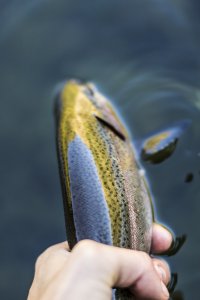What are the Rights of Nature?

ATV Club Renews Proposal to Open Methow Roads
March 27, 2023
2023 Legislative Sucesses
April 19, 2023A key objective in MVCC’s recently approved strategic plan is to incorporate the “rights of nature” into our decision-making process by advocating for the needs and voices of local landscapes and wildlife. But what exactly are the Rights of Nature laws and how have they come about?
Widening Circles: The Gradual Extension of Rights
At the founding of our country in 1776, the rights afforded to U.S. citizens only applied to a narrow slice of our population: property-owning white men. Through the last few centuries, legal rights have been extended to more and more groups of people (though many groups of people continue to be excluded). Even corporations now have rights. Until recently, Nature—the pulsing world that sustains us—has not had any legal rights guaranteeing protection. By viewing the animals, water, air, and land as less-than-human (thank you Aristotle) we have allowed ourselves to exploit and destroy the very earth that supports us.
Beginning in 2006, some countries, states and towns began to codify the legal rights of nature. These laws can vary from extending personhood to a river, to affirming that salmon have the right to flourish. Much like shifting the language we use to speak about our natural world, over time giving species and natural systems rights can change our relationship with them.
Several tribal nations have led the way in affirming rights of nature. This includes the Yurok Tribe recognizing the rights of the Klamath River, the Nez Perce tribe codifying the rights of the Snake River, and the White Earth Band of the Ojibwe protecting the rights of manoomin—wild rice. A few countries, including Bolivia, Uganda, and New Zealand have passed national rights of nature laws. Late last year nearly 200 countries at the U.N. Biodiversity Conference approved an accord that recognized the “rights of nature” in restoring and maintaining global biodiversity.
Closer to home, the San Juan County Council recently joined other cities and counties around the Puget Sound to acknowledge the rights of Southern Resident Killer Whales (Orcas). And in 2022 the Sauk-Suiattle Tribe sued the City of Seattle on behalf of salmon arguing that the city’s three hydroelectric dams violate the salmon’s right. The Tribe argued that, “salmon have the inherent right to ‘flourish’, that the Tribe has a right and responsibility to protect salmon, and that the city is engaged in intentional violation of these rights.”
Alongside the rights of nature is the right for “a life-sustaining climate system.” Earlier this month, the Hawaiian Supreme Court affirmed this right in rejecting a challenge for a new energy project. The Court’s decision could help to set the precedent in a growing number of state-level lawsuits arguing for the right to have a livable climate.
Closer to the Methow Valley, the Syilx Okanogan Nation Alliance which represents 8 tribes along the Okanogan River watershed in B.C. and Washington, including the Colville Confederated Tribes, is working to restore the Okanogan River and, perhaps eventually, give it personhood.
At MVCC we know that over the long-term to protect the land and water that supports us we need to shift the way we treat our surrounding ecosystems. Granting rights to the river, or the bear, or the climate we would like to inhabit is one way to extend respect and protection to the life-giving systems that surround us. As we learn more about the Rights of Nature movement and the opportunities to incorporate it into our work we will keep you informed!
Photo: Anna Sand (top), Hannah Dewey (bottom)



